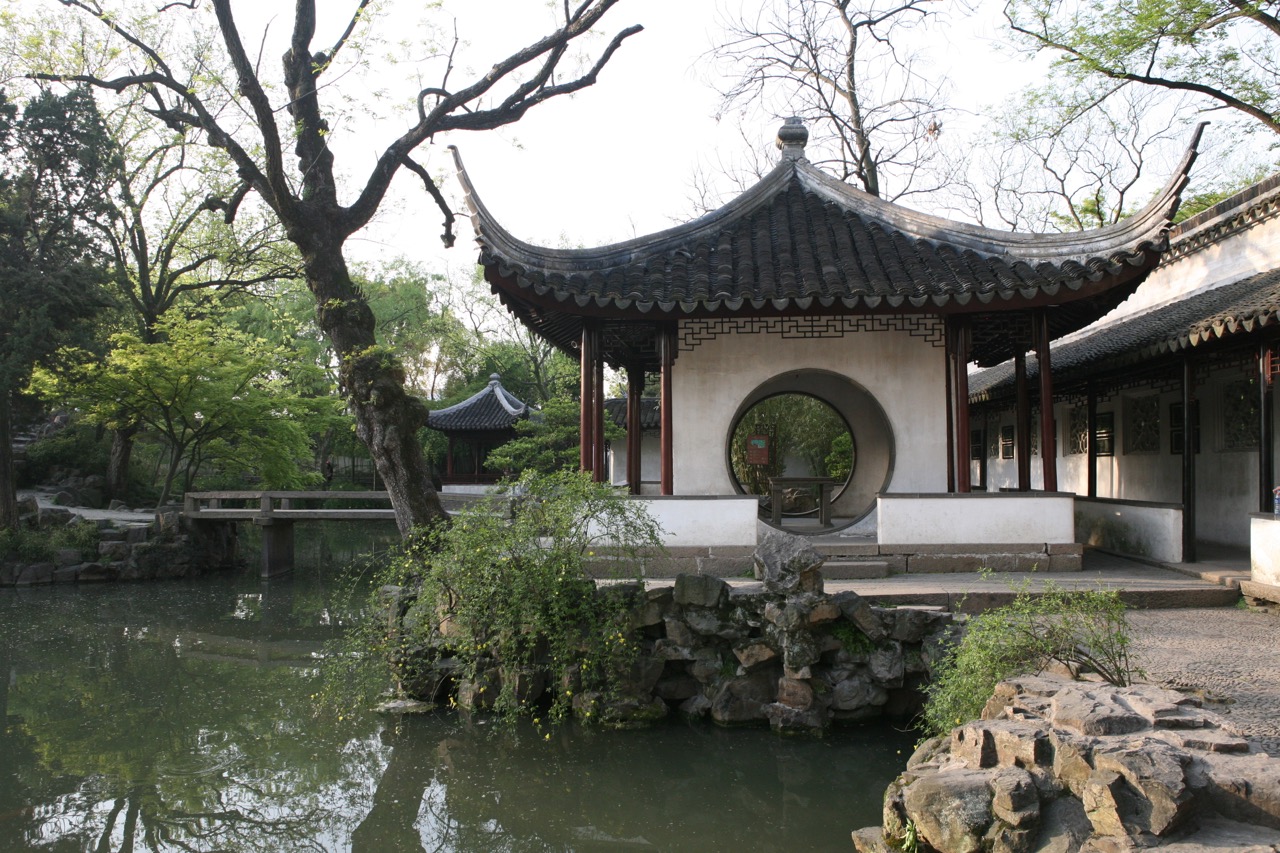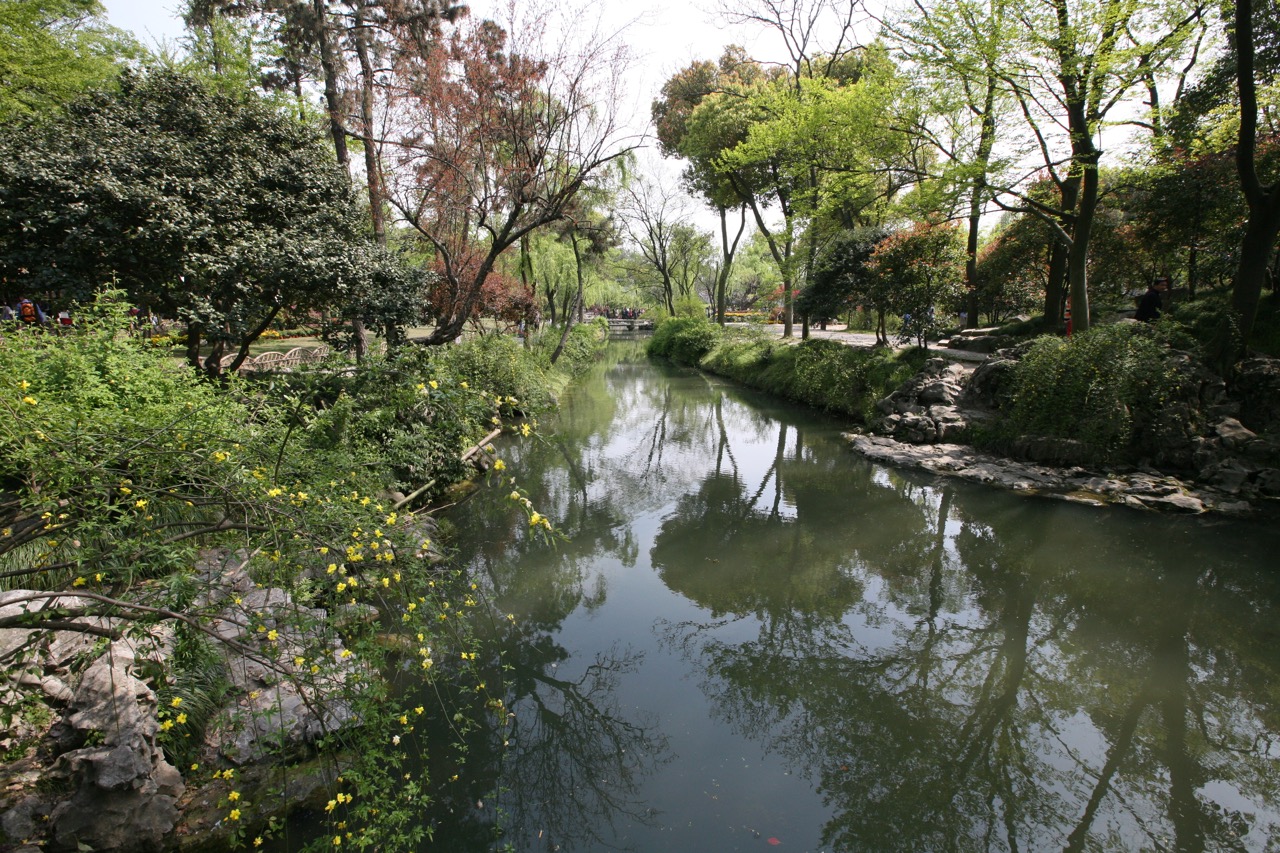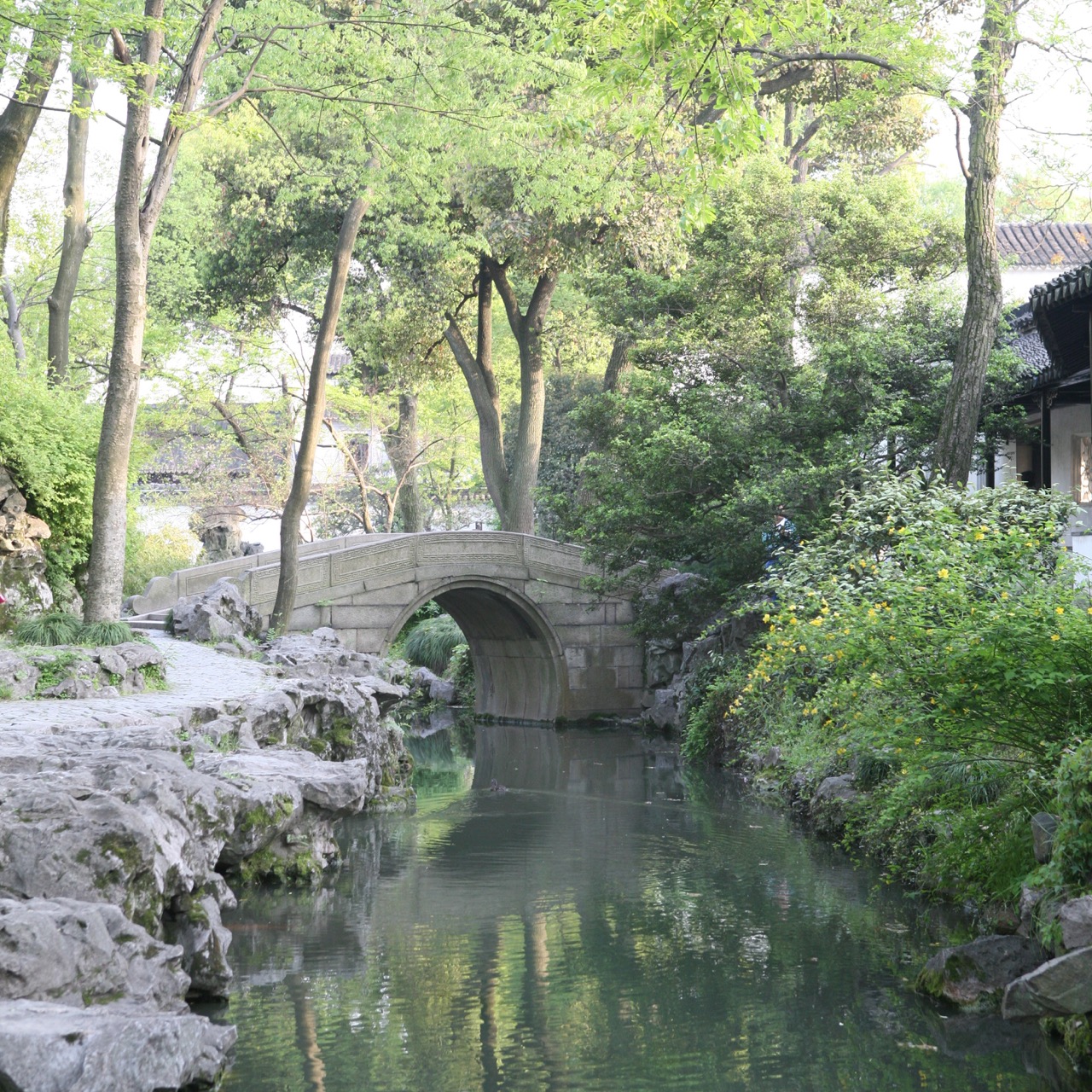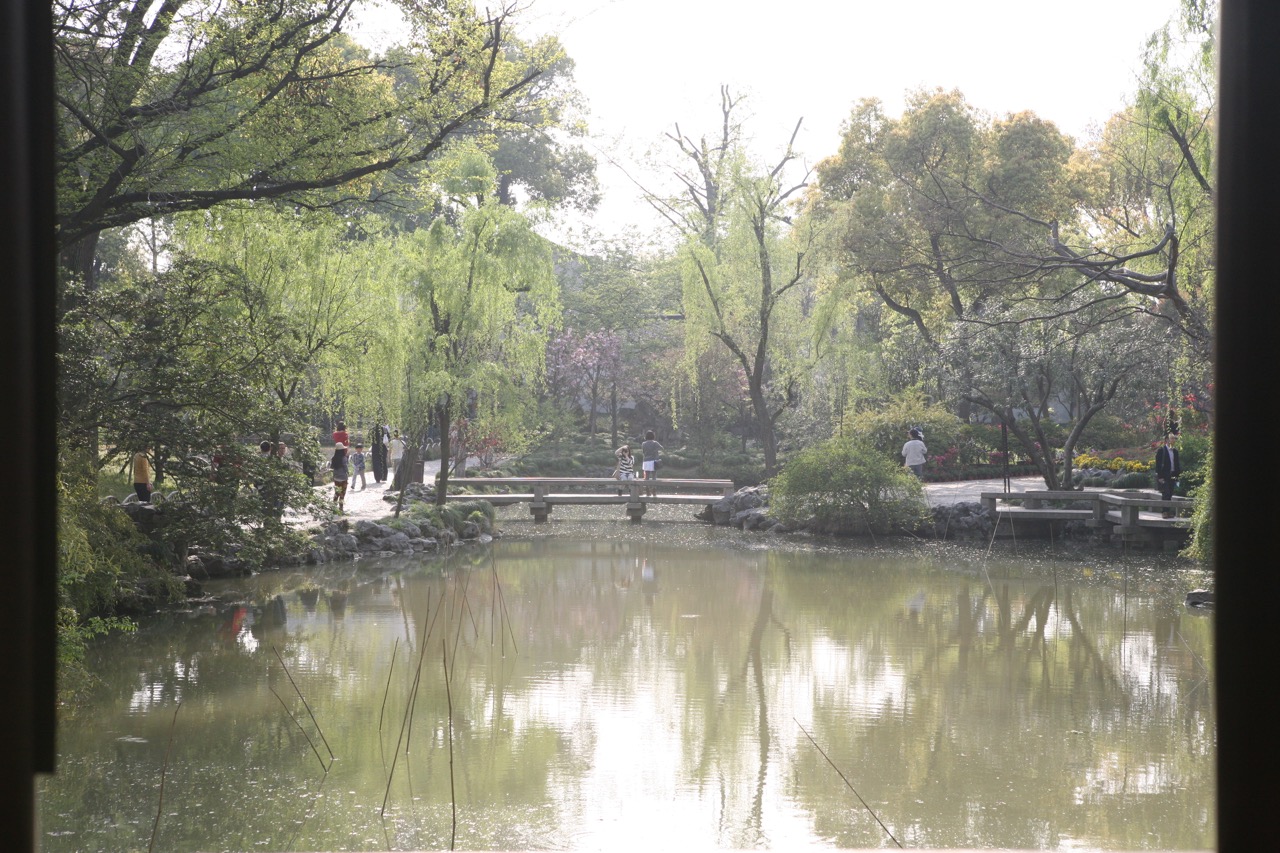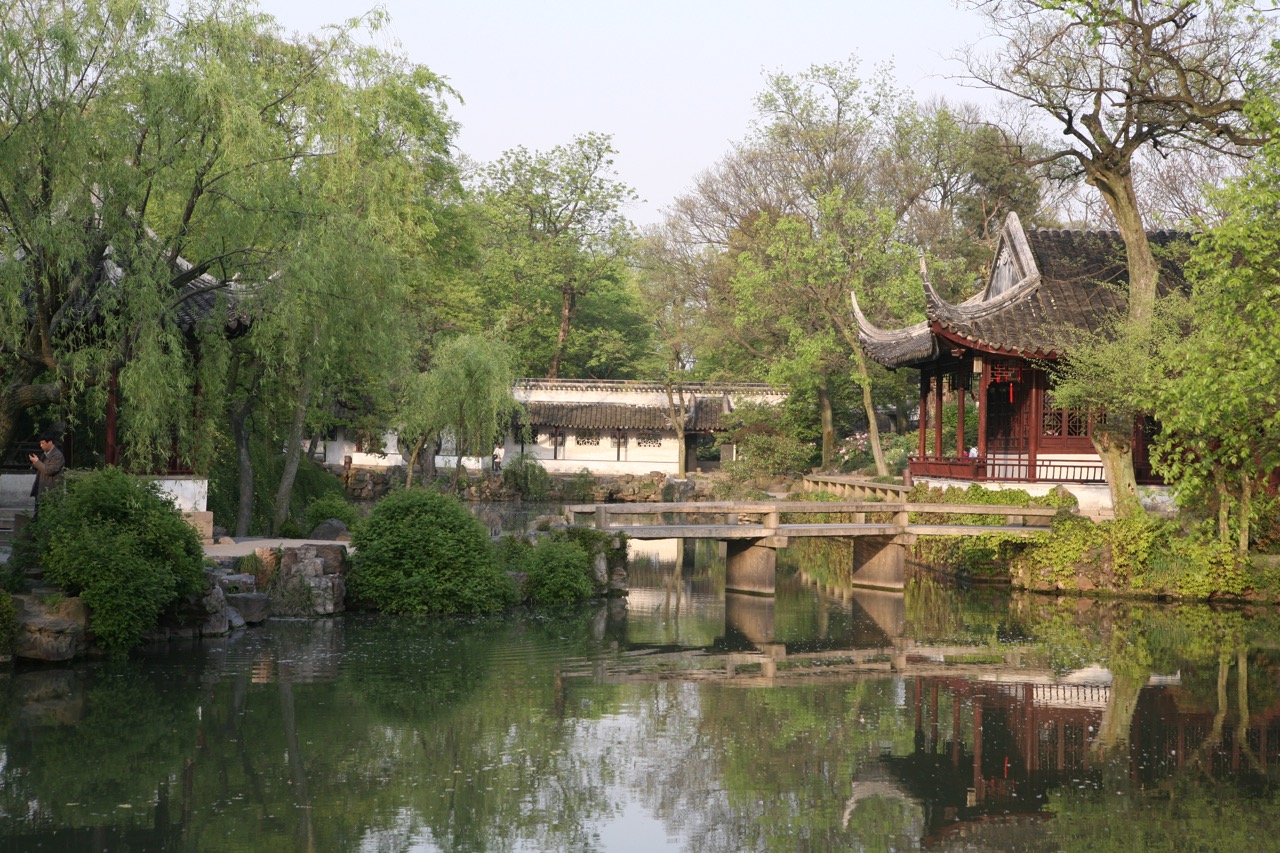Because work meetings started in Shanghai on a Monday, I planned my trip to arrive a few days earlier. This would allow me to recover from jet lag and, more important, to explore gardens! This was my first trip to China. I was so excited to experience at first hand landscapes from this ancient tradition. After all, the Chinese garden tradition is one of the oldest; it has influenced garden making as close by as Korea and Japan, and as far away as England. My search for “top historic gardens near Shanghai” pulled up several scholar gardens in Suzhou. Perfect! And first on my list was Suzhou’s most famous landscape - Zhuo Zheng Yuan, also known as the Humble Administrator’s Garden.
Crossing one of Suzhou's canals on my way to the garden.
Neither the oldest nor the most beautiful, it is the largest and most well-known of Suzhou’s scholar gardens. The Humble Administrator’s Garden contains elements that make Suzhou gardens famous: idealistic scenes influenced by Chinese paintings, and harmonious integration of architecture and nature.
Retired imperial inspector Wang Xiachen started to build this landscape in 1509. The gardens were made famous by artist Wen Zhengming who painted dozens of scrolls over a twenty-year period.
Arriving Friday afternoon, I checked into my room, dropped my bags, fought the urge to take a nap, and took a taxi straight to the garden.
What a delight! The bustling city streets full of people slowly disappeared behind high walls and various twists and turns. Almost immediately I came upon the central element of this garden – water. Man-made lakes arranged to look naturalistic appear to flow through the central, eastern, and western sections. Water as the main feature provides expansive views, dramatic rock outcroppings, as well as an excuse for ornamental bridges.
Entrance to Wang Xiachen's Humble Administrator's Garden residence.
This is a strolling garden. Pathways meander close to shore, then back into more intimate spaces. Xiachen designed the walk with deliberate pauses so that the visitor would have a particular experience. This could be a delicate planting of peonies, a grove of bamboo, a mound of clover, or a borrowed view. For example, Xiachen borrowed the view of Suzhou’s North Pagoda from one end of the lake. By framing this view in his design, he brought the pagoda into his garden. Note that borrowing a view is a popular technique in the English picturesque garden, too.
The garden was packed with the most welcoming people. Everyone seemed to be smiling and appreciating the beauty. One family and I ended up taking pictures of each other.
I am so glad that I carved out a few days to explore this garden. My jet lag was gone and what I experienced gave me insight into this ancient culture. I had lots to talk about with my Chinese colleagues Monday morning.
The Humble Administrator’s Garden is open every day and is located at 178 Dongbei Street.
Map of garden shows how man-made lakes cover most of the landscape and connect the various sections.



